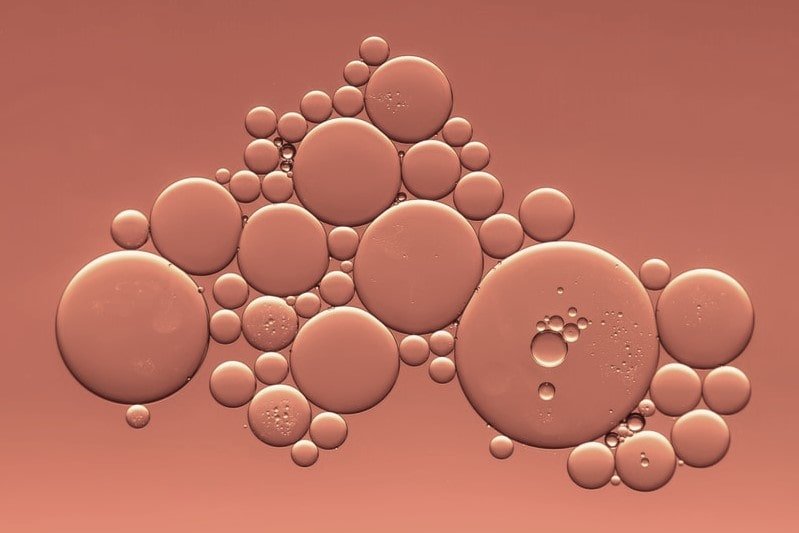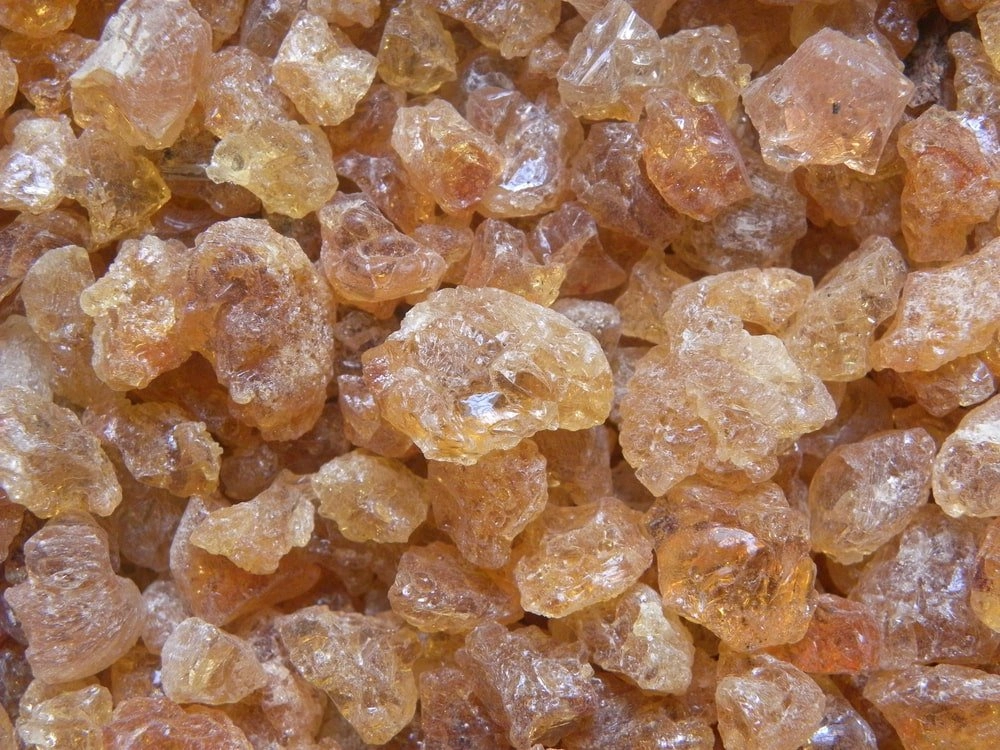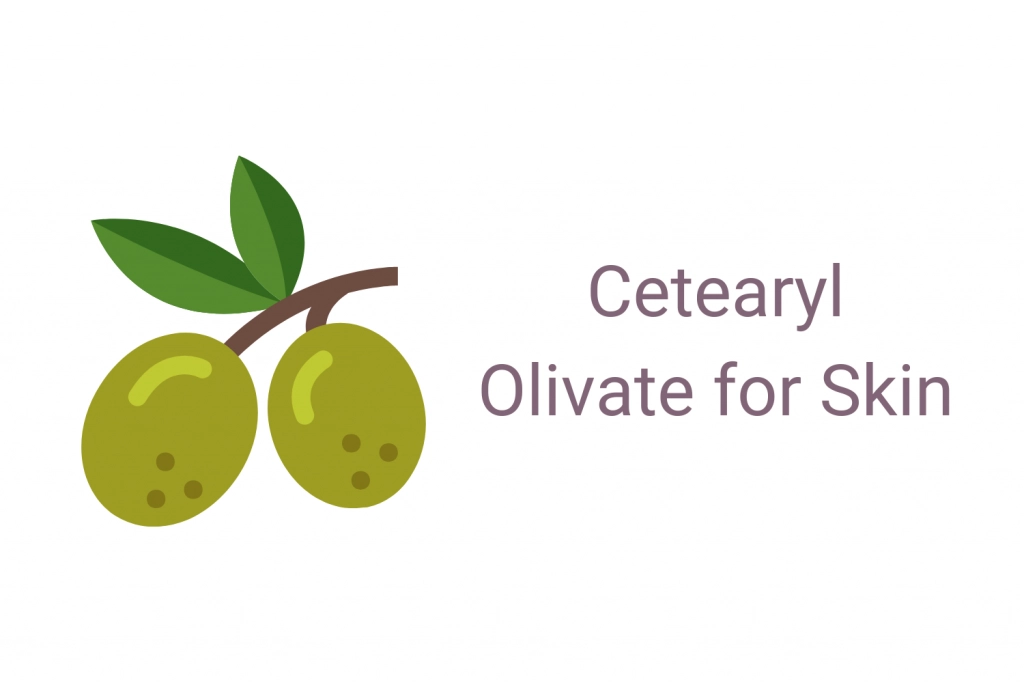Oleic acid isn’t a widely known skincare ingredient but you may know it by its more common names such as omegas and fatty acids. That’s what this ingredient is! Oleic acid is an omega-9 fatty acid that your body naturally produces. To be specific, it’s found in our sebum. It’s also in some plants and nuts.
This post may contain affiliate links. Read the full disclosure here
You might be wondering how it can fit into your daily skincare routine. Or if you even need more of this on your skin. The body already produces oleic acid so I shouldn’t need anymore right? More sebum doesn’t sound all that appealing…
Well, your skin needs a natural balance of oleic acid and other fatty acids such as linoleic acid to remain healthy. That’s why this ingredient is so important.
Though it’s useful, pure oleic acid wouldn’t be good for your skin. This ingredient performs much better when mixed with other ingredients are present as part of a carrier oil. Think natural oils such as argan oil or baobab oil. Let’s take a deeper look at where this fatty acid comes from and the considerations before using on your skin.
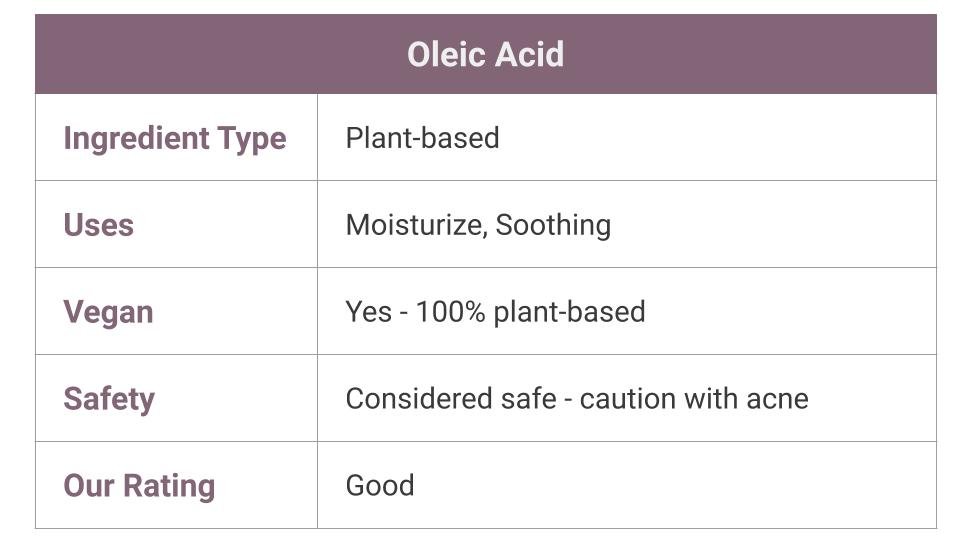
What Is Oleic Acid?
Oleic acid is a monounsaturated omega-9 fatty acid. That’s a mouthful, but this ingredient is natural. It is in in grape seed oil, cranberry seed oil, olive oil, and more. Many associate olive oil with oleic acid since it it has a very high oleic acid content.
For use in skin care formulations, it can be extracted from vegetable fats and oils with saponification and distillation. It also happens to be the by-product in the manufacturing process of stearic acid and palmitic acid.
As noted above, our bodies naturally produce oleic acid. It’s completely odorless and colorless and it’s the most common fatty acid in nature. There’s your fun fact for the day. Chances are, you’ve already using oleic acid as part of your daily regime today.
Oils rich in oleic acid tend to be thicker and richer, making them great options for dry, mature skin. However, not the best option for acne-prone skin. Oleic acid is considered to be comedogenic, meaning it may clog your pores. It can be heavy for those with oily skin too.
You’ll find that many oils high in oleic acid have comedogenic ratings of 2-4. But don’t make a run for it yet, oleic acid can be great for the skin when balanced with other ingredients.
Oils rich in oleic acid also have a longer shelf life and are more stable. Let’s take a deeper look at some of its benefits for the skin.
Oleic Acid Skin Benefits
Oleic acid can help replenish moisture, fight free radicals, and soothe irritated skin. It’s a heavier oil but it penetrates the skin well. It can also help other skincare ingredients absorb better to improve efficacy. It makes for a great addition to anti-aging serums, heavy moisturizers, and replenishing creams.
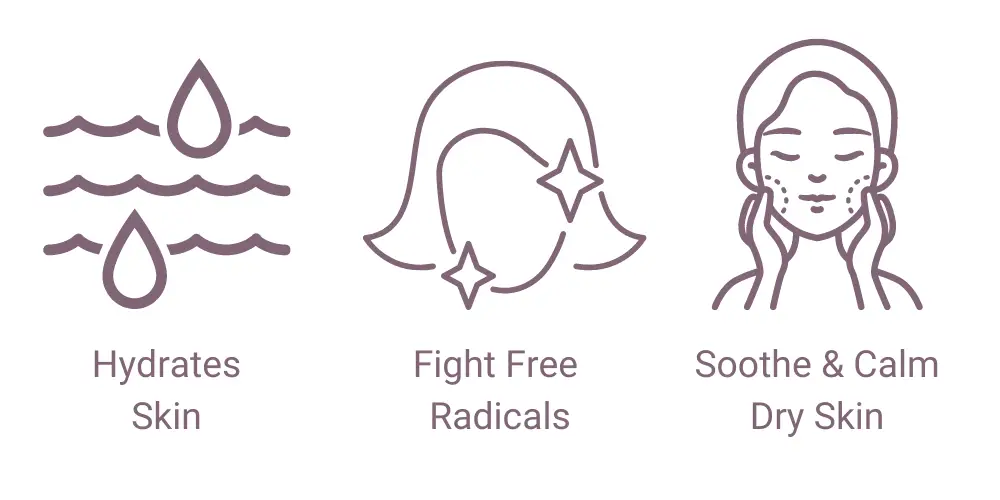
Hydration
Oleic acid is great for replenishing dry, aging skin. It penetrates the skin to moisturize below the skin’s surface. As we age, our skin doesn’t hold as much moisture. That’s what thicker oleic acid oils are great for rehydrating dry or mature skin.
It’s important to remember – dry or cracked skin is more prone to wrinkles and fine lines. Keep that skin hydrated!
Fight Free Radicals
It’s rich in antioxidants. These help fight off free radicals that can cause premature aging. Sun-damage and environmental stressors can lead to wrinkles, fine lines, and uneven tone. In that sense, getting rid of free radicals helps slow the aging process.
Soothe Skin
Oleic acid helps calm and soothe skin. It has anti-inflammatory properties that promote balanced, calm skin. It can help with skin conditions such as eczema, rosacea, and psoriasis.
Oleic Acid Concerns
Given that oleic acid is found in our sebum, you might be wondering – is oleic acid bad for the skin? By itself, it’s not a great option for your skin. In high concentrations, it can be a concern for oily skin, acne-prone skin, and it also can disrupt skin barrier function.
As we find it in nature with carrier oils such as grape seed oil and argan oil, it can be beneficial for the skin. But there are trade-offs that are important to understand.

Acne and Clogged Pores
The most controversy with ingredient is around its relationship with acne. Those who struggle with acne tend to have more oleic acid present in their skin. In other words, they have an overproduction of oleic acid. That generally leads to two conclusions.
- If the skin already has a high oleic acid content, why would you add more? – From this standpoint, it’s hard to argue that this would be a beneficial ingredient for acneic skin. If you struggle with acne, you should avoid oils or products rich in oleic acid.
- Since acne-prone skin has high oleic acid content, it must cause acne – This isn’t exactly true but there are parallels. It’s likely more of correlation but not causation case. However, oleic acid can lead to clogged pores which can certainly lead to acne.
Disrupt Skin Barrier
One study found that oleic acid can hinder the natural function of the skin barrier. This disruption can lead to skin sensitivity or irritation. I can help other ingredients absorb into the skin better but this comes with some risk of irritation.
Oils High in Oleic Acid
The best way to use oleic acid as part of your skincare routine is with a natural oil! It’s the perfect way to get the benefits of oleic acid while keeping the balance with other fatty acids such as linoleic acid. The following oils have the highest oleic acid content.
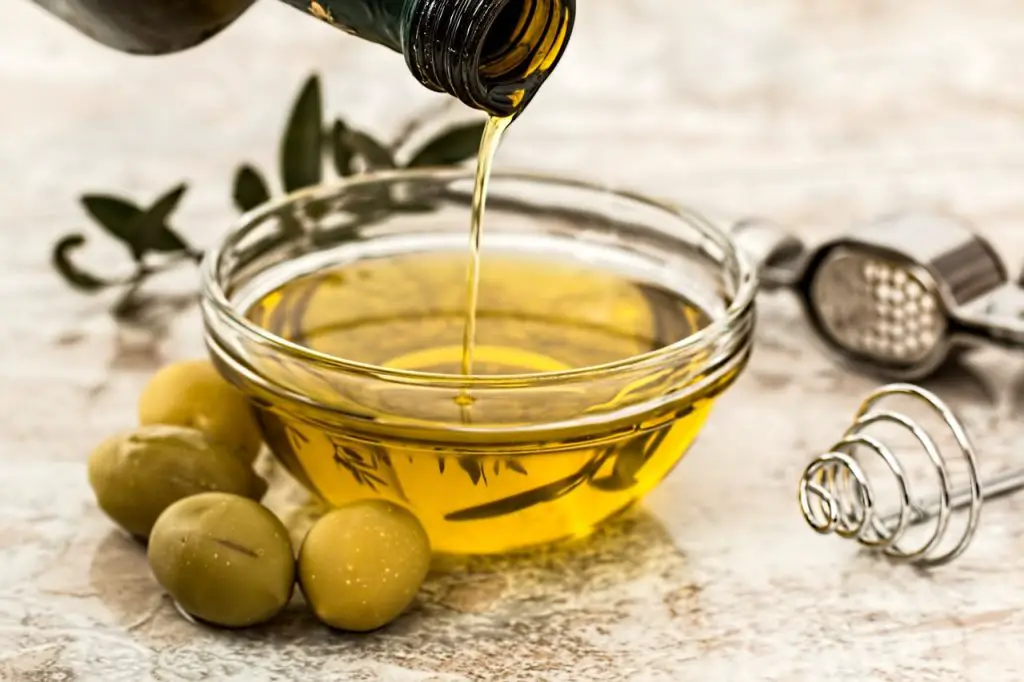
- Apricot kernel oil – 58-73% oleic acid and 18-31% linoleic acid
- Argan Oil – 43-49% oleic acid and 29-36% linoleic acid
- Avocado Oil – up 70% oleic acid
- Baobab Oil – 30-40% oleic acid and 24-34% linoleic acid
- Marula Oil – 70-78% oleic acid and 4-7% linoleic acid
- Moringa Oil – 65-85% oleic acid
- Olive Oil – 55-80% oleic acid
- Tamanu – 34-41% oleic acid and 29-38% linoleic acid
- Sea buckthorn – 28.4% oleic acid and 17.84% linoleic acid
- Shea butter – 46-62% oleic acid, 41-50% stearic acid
- Sunflower – 70-88% oleic acid and 3-20% linoleic acid
Many of these are heavily promoted in rich, ultra-moisturizing creams. Their oleic acid content is one of the main reasons they offer deep moisturizing benefits. On the flip side, you probably won’t find acne treatment products promoting the natural oils above.
How Is It Used in Skincare Products?
Oleic acid, like many other ingredients, is often used for its direct skin benefits. But you’ll find this ingredient in skincare and cosmetic products for formulation benefits as well! It can act as a surfactant, texture enhancer, penetration enhancer, and emulsifier.
Surfactant (Cleansing Agent)
It can be used in products as a cleansing agent in face or body wash. It works by helping loosen dirt and oil from the skin so it can be easily washed away. Surfactants are really what makes cleansers, shampoos, and soaps effective at, well cleaning.
Cleansing oils are growing in popularity for their ability to clean the skin and leave the skin moisturized. Oleic acid is present in some of the cleansers, especially those using natural plant oil ingredients.
Texture Enhancer
Oleic acid is a thicker oil. These can be appealing to products that have a watery or low viscosity. It’s not the best option for this use alone, but it can act as a texture enhancer.
Emulsifier
This is a fancy way of saying that it helps various ingredient mix better. Water-based and oil-based ingredients don’t mix well naturally. That’s where emulsifying ingredients such as oleic acid come in. It helps products with various ingredients have a longer shelf life and reduce the chances of separation.
Penetration Enhancer
Oils high in oleic acid can penetrate the skin barrier. This benefit can help products be more effective. This is very helpful for anti-aging, nourishing, and hydrating ingredients. As noted above, this does pose risk for skin sensitivity or skin irritation.
Is Oleic Acid Safe for Skin?
Yes, oleic acid is considered safe to use in skincare and cosmetic products. As noted in the concerns above, take precaution if you have acne, clogged pores, or have sensitive skin prone to irritation.
According to the Cosmetic Ingredient Review Panel, oleic acid is safe to use in cosmetics for its recommended use. However, they found that it can lead to irritation. It is recommended that products with fatty acids such as oleic acid are formulated to be non-irritating and non-sensitizing.
Frequently Asked Questions
Find answers to some of the most frequently asked questions about oleic acid
Using Oleic Acid in Your Skincare Routine
Overall, oleic acid makes for a great addition (or part) of your skincare routine. While you wouldn’t want to find a pure oleic acid serum (they don’t exist), it can make for a valuable part of your routine.
Many of the oils listed above are fantastic for the skin, especially if you have dry or aging skin. However, if you struggle with acne or oily skin you’ll want to look for natural oils or ingredients that have a lower oleic acid content. In other words, you don’t need to worry about oleic acid too much when it comes to choosing the right skin care product. Instead focus on the particular oil or other ingredients that are included in the product.
By taking this holistic approach you do a better job choosing the perfect product for your skin. Learn more about how oleic acid compares to linoleic acid here.
Sources
- 2019 Cosmetic Ingredient Review Expert Panel
- https://pubchem.ncbi.nlm.nih.gov/compound/965
- https://www.healthline.com/nutrition/9-avocado-oil-benefits
- https://www.sciencedirect.com/topics/pharmacology-toxicology-and-pharmaceutical-science/oleic-acid
- https://en.wikipedia.org/wiki/Vitellaria
- https://www.sciencedirect.com/topics/neuroscience/coconut-oil
- https://pubs.acs.org/doi/10.1021/jf071801p
- brenntag.com/media/documents/bsi/product_data_sheets/life_science/textron_natural_oils/moringa_oil_tx008498_pds.pdf

